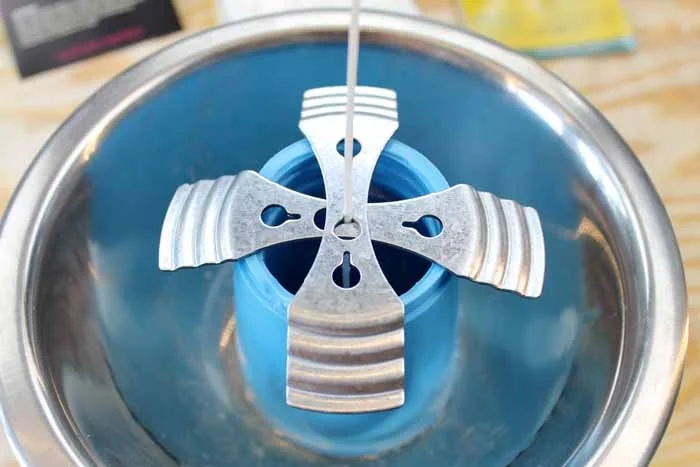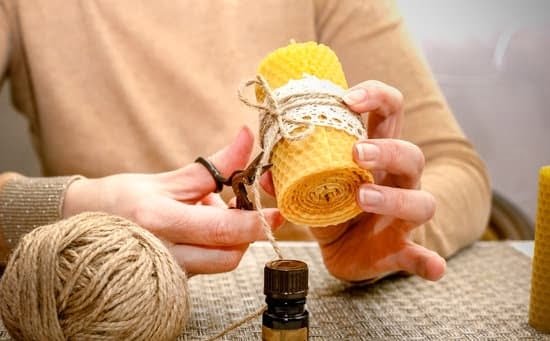What is frosting in candle making? Frosting is a natural and common occurrence in candles that can sometimes be misunderstood or mistaken for imperfections. In this article, we will delve into the fascinating world of frosting in candle making, exploring its causes, impact on aesthetics and quality, as well as tips to minimize or embrace it as a unique feature.
Frosting occurs when the wax cools and solidifies, creating a crystalline or frosted appearance on the surface of the candle. This phenomenon is more common in natural waxes like soy or beeswax due to their composition and cooling process. While some may view frosting as a flaw, others see it as a charming characteristic that adds to the overall appeal of handmade candles.
Understanding the science behind what causes frosting in candles is essential for any candle maker. By learning about the factors that contribute to frosting, such as temperature fluctuations during cooling or the type of wax used, you can better control and manage this natural occurrence. Stay tuned as we explore how frosting can impact your candle-making process and discover expert advice on dealing with frosting in various types of wax.
What Causes Frosting in Candles? Exploring the Science Behind It
Frosting is a common occurrence in candle making that can sometimes be misunderstood or mistaken for a flaw in the finished product. Understanding the science behind what causes frosting can help shed light on this phenomenon. Frosting appears as a white, powdery film on the surface of candles, resembling the look of frost on a cold windowpane. It often affects soy wax candles more prominently but can also occur in paraffin and other types of wax blends.
The Role of Crystallization
One of the main factors that contribute to frosting in candles is the process of crystallization within the wax. Soy wax, for example, has a tendency to naturally crystallize as it cools and solidifies. These crystals rise to the surface of the candle, creating the frosted appearance. The speed at which the candle cools can also impact the formation of these crystals and ultimately contribute to frosting.
Temperature Fluctuations
Temperature fluctuations during the cooling process can also play a significant role in causing frosting. If the candle cools too quickly or if it experiences drastic changes in temperature while setting, it can lead to uneven crystallization and increase the likelihood of frosting developing on the surface. Maintaining consistent temperatures throughout the cooling process can help minimize this effect.
Humidity Levels
Additionally, humidity levels in your workspace can influence frosting in candles. High humidity environments may accelerate crystallization and increase the chances of frosting occurring on your candles. Controlling humidity levels or finding ways to adapt your candle making process to accommodate varying levels of humidity can help reduce the impact of frosting on your finished products. Understanding these scientific factors behind what causes frosting in candles empowers candle makers to make informed decisions and adjustments during their crafting process.
The Impact of Frosting on Candle Aesthetics and Quality
Frosting in candle making is not just a mere imperfection but can actually have a significant impact on the aesthetics and quality of the final product. Understanding how frosting affects candles is crucial for any candle maker looking to create high-quality products. Here are some key points to consider:
- Aesthetics: Frosting can give candles a unique, frosted appearance that some people may find appealing. It can add a touch of elegance and charm to the overall look of the candle, making it stand out from other types of candles.
- Quality: While frosting may be viewed as a flaw by some, it doesn’t necessarily affect the quality or performance of the candle. In fact, some argue that frosting can enhance the burning experience by creating interesting patterns and textures as the candle melts.
It’s important for candle makers to consider how frosting will impact their candles based on their personal preferences and the design aesthetic they are aiming for. Some may embrace frosting as a unique feature that adds character to their creations, while others may see it as something to avoid or minimize.
When it comes to choosing whether or not to embrace frosting in your candle making process, keep in mind that it all depends on your creative vision and goals for your candles. Experiment with different techniques and materials to see what works best for you and your unique style. Whether you choose to reduce frosting or let it shine through as part of your design, remember that embracing imperfections can sometimes lead to unexpected beauty in your finished products.
Tips and Tricks to Minimize Frosting in Your Homemade Candles
Frosting is a common occurrence in candle making that can sometimes be frustrating for crafters looking to achieve a flawless finish. However, there are several tips and tricks that can help minimize frosting in your homemade candles and create a more polished end product. One important factor to consider is the type of wax you are using.
Soy wax, for example, is known to be more prone to frosting compared to other types of wax. To reduce frosting, consider blending soy wax with other waxes like paraffin or beeswax.
Another tip to minimize frosting in your candles is to pour them at the right temperature. Make sure to follow the recommended pouring temperature for the specific type of wax you are using. Pouring at too high or too low temperatures can increase the likelihood of frosting forming on the surface of your candles. Additionally, using a heat gun or hairdryer to smooth out any frosty spots on your finished candles can help improve their overall appearance.
Furthermore, it’s essential to store your finished candles properly to prevent frosting from occurring. Keep your candles away from drafts or rapid temperature changes, as these conditions can contribute to frosting developing over time. By taking these tips into consideration and experimenting with different techniques, you can successfully minimize frosting in your homemade candles and create beautiful, professional-looking products for yourself or as gifts for others.
How to Embrace Frosting as a Unique Feature in Your Candle Making
When it comes to candle making, many artisans view frosting as an unwanted imperfection that detracts from the overall quality of their creations. However, with a shift in perspective, frosting can actually be embraced as a unique and beautiful feature that adds character to your candles. By understanding how to work with frosting rather than against it, you can create candles that stand out for their distinctive appearance.
Utilizing Frosting for Aesthetic Appeal
Instead of seeing frosting as a flaw, consider incorporating it into your candle designs intentionally. Frosting can add a touch of rustic charm or vintage elegance to your candles, giving them a handmade and artisanal look. You can enhance the visual appeal of frosting by choosing waxes and fragrances that complement its delicate crystalline patterns.
Experimenting With Different Wax Blends
Certain types of wax are more prone to frosting than others, so experimenting with different wax blends can help you embrace this phenomenon in your candle making process. Soy wax, for example, is known for its natural tendency to frost, creating a frosted effect that adds depth and texture to your candles. Beeswax and coconut wax are also popular choices for achieving unique frosting patterns.
Enhancing the Beauty of Frosting With Decorative Techniques
To further enhance the beauty of frosting in your candles, consider using decorative techniques such as layering different colored waxes or adding glitter or mica powder to highlight the frosty texture. Embracing frosting as a design element rather than trying to eliminate it can open up new creative possibilities in your candle making endeavors. Embrace the uniqueness of each frosted candle as a one-of-a-kind piece that showcases the artistry and craftsmanship behind your creations.
Common Misconceptions About Frosting in Candle Making
When it comes to candle making, one of the most common misconceptions is that frosting is a sign of poor quality or craftsmanship. In reality, frosting is a natural and inevitable occurrence in soy wax candles, especially those made with 100% natural soy wax.
It occurs when the wax cools and solidifies, creating a white, powdery film on the surface of the candle. While some may view this as a flaw, many experienced candle makers embrace frosting as a unique and beautiful characteristic of soy candles.
Another misconception about frosting is that it signifies that the candle is old or has been stored improperly. However, frosting can actually develop shortly after the candle has been poured and cooled. It is not an indication of age or storage conditions but rather a result of the composition and cooling process of the wax used. Understanding this can help new candle makers appreciate frosting as a natural part of the candle-making process rather than a defect.
Furthermore, some may believe that frosting negatively impacts the scent throw or burning performance of a candle. In reality, frosting does not affect the fragrance or burn quality of the candle. It is purely an aesthetic feature that adds character to the appearance of the candle. By recognizing these misconceptions about frosting in candle making, hobbyists and enthusiasts can better appreciate and work with this phenomenon to create unique candles with their own distinct charm.
| Myth | Reality |
|---|---|
| Frosting indicates poor quality. | Frosting is natural in soy wax candles. |
| Frosting means an old or improperly stored candle. | Frosting can develop soon after pouring. |
| Frosting affects scent throw/burning performance. | Frosting has no impact on fragrance/burn quality. |
The Difference Between Frosting and Other Candle Imperfections
Frosting is a unique occurrence in candle making that sets it apart from other imperfections commonly found in candles. Unlike issues such as tunneling, cracking, or sweating, frosting is more of a natural characteristic of soy wax candles.
It occurs when the wax cools down too quickly during the curing process, leading to a crystalline-like appearance on the surface of the candle. While some may see frosting as a flaw, many candle makers and enthusiasts actually embrace it as part of the charm and character of soy wax candles.
One key distinction between frosting and other imperfections is that frosting does not affect the performance or burn quality of the candle. In fact, some argue that frosting can enhance the overall aesthetic appeal by giving the candle a rustic or vintage look.
Additionally, frosting is often seen as a sign of using high-quality soy wax that has not been overly processed or refined. To appreciate its uniqueness, many artisanal candle makers leave frosting untouched or even incorporate it into their design aesthetics.
It’s essential for both beginners and experienced candle makers to understand the difference between frosting and other common imperfections in candles. By recognizing that frosting is more of a cosmetic issue rather than a functional one, you can adjust your expectations accordingly when working with soy wax. Embracing this natural phenomenon can open up new creative possibilities in your candle making endeavors and allow you to appreciate the beauty of imperfection in your handcrafted creations.
| Frosting | Other Common Imperfections |
|---|---|
| Occurs due to rapid cooling during curing | Tunneling, cracking, sweating are functional issues |
| Considered a natural characteristic of soy wax candles | Can impact burn quality and performance |
| Embraced for its rustic charm by many candle makers | Often viewed as flaws to be corrected |
Expert Advice on Dealing With Frosting in Different Types of Wax
When it comes to dealing with frosting in candle making, understanding the type of wax you are using can make a significant difference in how you address this issue. Different types of wax can react differently to temperature changes, resulting in varying levels of frosting. Here are some expert tips on dealing with frosting in different types of wax:
- Paraffin Wax: Paraffin wax is known for its tendency to produce noticeable frosting on candles. To reduce frosting, try heating the container slightly before pouring the wax to minimize temperature shock. Additionally, using a heat gun or hairdryer to gently warm the surface of the candle after it has cooled can help smooth out any frosting.
- Soy Wax: Soy wax is another popular choice for candle making, but it too can be prone to frosting. To mitigate frosting in soy wax candles, consider adding a small amount of stearic acid or Vybar during the melting process. These additives can help improve the overall appearance and texture of the finished candle.
- Beeswax: Beeswax is known for its natural color and unique aroma, but it is also susceptible to frosting. To combat frosting in beeswax candles, try pouring at a slightly higher temperature and allowing the candles to cool slowly and evenly. You can also experiment with different cooling methods, such as placing the candles in a cold water bath after pouring.
Overall, each type of wax requires a slightly different approach when it comes to managing frosting in candle making. By implementing these expert strategies tailored to specific wax varieties, you can achieve smoother, more aesthetically pleasing candles that showcase your craftsmanship and attention to detail.
Remember that experimentation and patience are key when dealing with frosting in different types of wax. By refining your techniques and understanding how each type of wax behaves under various conditions, you can master the art of minimizing frosting and creating beautiful candles that reflect your creativity and skill as a candle maker.
Conclusion
In conclusion, while frosting may initially be seen as a flaw in candle making, it can actually be embraced as a unique and beautiful feature. Understanding the science behind what causes frosting in candles allows crafters to appreciate this phenomenon rather than see it as a problem to be fixed. By learning how to minimize frosting through various techniques and tricks, candle makers can still achieve high-quality products while embracing the natural aspects of the craft.
Furthermore, instead of viewing frosting as a hindrance, candle enthusiasts can see it as an opportunity to create one-of-a-kind pieces that stand out from commercially-made candles. Embracing frosting as a distinctive characteristic adds character and personality to each candle, making them truly special and individualistic. By experimenting with different waxes and techniques, crafters can harness the beauty of frosting to enhance their creations and offer customers unique products that cannot be replicated elsewhere.
In the world of candle making, it is important to remember that perfection does not always equate to beauty. Embracing imperfections such as frosting can lead to unexpected creative outcomes that set handmade candles apart from mass-produced ones. By appreciating the nuances of each candle’s appearance, fragrance, and aesthetic qualities, crafters can fully immerse themselves in the art of candle making and find joy in the process of creating something truly original.
Frequently Asked Questions
How Do I Stop My Soy Candles From Frosting?
To prevent frosting on your soy candles, there are a few steps you can take. First, try pouring your candles at a slightly higher temperature to reduce the amount of frosting that forms.
Second, consider using a heat gun to smooth out any frosting that does occur. Finally, storing your candles in a cool, dark place can also help minimize frosting over time.
What Does Candle Frosting Mean?
Candle frosting refers to the white, crystal-like powder that sometimes forms on the surface of soy candles. This phenomenon is caused by the natural characteristics of soy wax and does not affect the quality or performance of the candle. While some may find frosting visually unappealing, it is not considered a defect in soy candles.
How Do You Make Candles Without Frosting?
Making candles without experiencing frosting can be challenging, especially when using soy wax which tends to frost more than other types of wax. However, there are some tips and tricks you can try to minimize frosting.
These include using a preheated container before pouring the wax, making sure to pour at the right temperature, and avoiding sudden temperature changes during the cooling process. Additionally, experimenting with different additives like stearic acid or vybar can also help reduce frosting in your homemade candles.

Welcome to my candle making blog! In this blog, I will be sharing my tips and tricks for making candles. I will also be sharing some of my favorite recipes.





